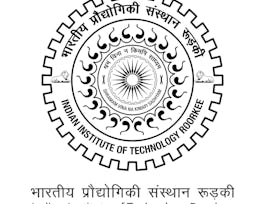How do we infer which genes orchestrate various processes in the cell? How did humans migrate out of Africa and spread around the world? In this class, we will see that these two seemingly different questions can be addressed using similar algorithmic and machine learning techniques arising from the general problem of dividing data points into distinct clusters.



Genomic Data Science and Clustering (Bioinformatics V)
This course is part of Bioinformatics Specialization


Instructors: Pavel Pevzner
Sponsored by Louisiana Workforce Commission
16,190 already enrolled
(91 reviews)
Skills you'll gain
Details to know

Add to your LinkedIn profile
3 assignments
See how employees at top companies are mastering in-demand skills

Build your subject-matter expertise
- Learn new concepts from industry experts
- Gain a foundational understanding of a subject or tool
- Develop job-relevant skills with hands-on projects
- Earn a shareable career certificate


Earn a career certificate
Add this credential to your LinkedIn profile, resume, or CV
Share it on social media and in your performance review

There are 3 modules in this course
<p>Welcome to class!</p><p>At the beginning of the class, we will see how algorithms for <strong>clustering </strong>a set of data points will help us determine how yeast became such good wine-makers. At the bottom of this email is the Bioinformatics Cartoon for this chapter, courtesy of <a href="http://bearandfox.com" target="_blank" title="Link: http://bearandfox.com">Randall Christopher</a> and serving as a chapter header in the Specialization's bestselling <a href="http://bioinformaticsalgorithms.com" target="_blank">print companion</a>. How did the monkey lose a wine-drinking contest to a tiny mammal? Why have Pavel and Phillip become cavemen? And will flipping a coin help them escape their eternal boredom until they can return to the present? Start learning to find out!</p><p><img width="550" alt="" src="http://bioinformaticsalgorithms.com/images/cover/clustering_cropped.jpg" title="Image: http://bioinformaticsalgorithms.com/images/cover/clustering_cropped.jpg"></p>
What's included
5 videos2 readings1 assignment2 app items
<p>Welcome to week 2 of class!</p> <p>This week, we will see how we can move from a "hard" assignment of points to clusters toward a "soft" assignment that allows the boundaries of the clusters to blend. We will also see how to adapt the Lloyd algorithm that we encountered in the first week in order to produce an algorithm for soft clustering. We will also see another clustering algorithm called "hierarchical clustering" that groups objects into larger and larger clusters.</p>
What's included
5 videos1 reading1 assignment2 app items
What's included
2 readings1 assignment
Instructors

Offered by
Why people choose Coursera for their career




Learner reviews
91 reviews
- 5 stars
51.64%
- 4 stars
28.57%
- 3 stars
10.98%
- 2 stars
3.29%
- 1 star
5.49%
Showing 3 of 91
Reviewed on Nov 10, 2018
Absolutely fantastic course. Kudos to the course creators.
Reviewed on Jul 20, 2019
In depth and comprehensive coverage of the topics in genetic data analysis.
Reviewed on Jun 9, 2017
the part about EM is the best I know, and first time I understand the EM algorithm.
Recommended if you're interested in Health

Johns Hopkins University

Fred Hutchinson Cancer Center

Fred Hutchinson Cancer Center

IIT Roorkee

Open new doors with Coursera Plus
Unlimited access to 10,000+ world-class courses, hands-on projects, and job-ready certificate programs - all included in your subscription
Advance your career with an online degree
Earn a degree from world-class universities - 100% online
Join over 3,400 global companies that choose Coursera for Business
Upskill your employees to excel in the digital economy


